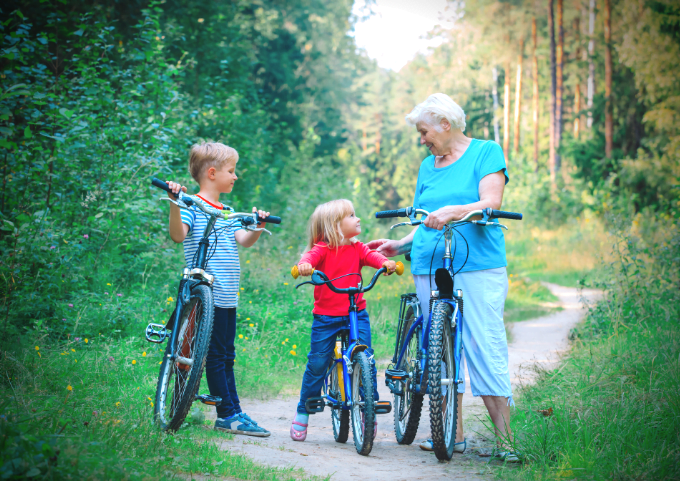
This blog post about teaching piano technique to beginners was written by Penelope Roskell. Penelope is a Professor of Piano and Piano Pedagogy at Trinity Laban Conservatoire in London. She is committed to helping teachers teach more effectively, and is currently preparing three books of piano technique exercises for beginners and intermediates as well as an online course for teachers on teaching healthy piano technique. To learn more about Penelope – including her publications and courses – check out her website at www.peneloperoskell.co.uk.
When piano teachers are short of time, inevitably some aspects of teaching tend to get left out. Sadly, it is often the technical development which gets pushed to the side.

Too often, piano teachers skip teaching technique to beginners because they see it as tedious, repetitive and overly time-consuming.
So, how can we teach piano technique in a way which is both musically relevant and fun?
Piano Technique for Beginners: in Lessons
I believe that every fundamental aspect of technique can be taught in one lesson. Keeping an exercise short and simple allows the student time and mental space to give full attention to the quality of the movement and the sound.
For example, it’s much more productive to learn to play one scale evenly, hands separately and at a steady tempo with beautiful sound and flowing technique, than it is to learn a lengthy study which contains many scales, hands together, at an unmanageable speed which might cause mental and physical tension.
Once students learn good basic scale technique, however, they can then easily put it into practice in lengthier scalic passages, hands together and at increasing tempo.
Keep Piano Technique Exercises Short
I believe strongly that most exercises and studies are too long.
Most piano teachers have shelf-loads of books full of technical exercises and studies, many of which are several pages in length and of limited musical value. (Here I discount the great concert works by Chopin, Liszt and others, obviously).
What is the point of spending hours learning all these studies when students could spend their time more productively learning new repertoire?
Keep Piano Technique Exercises Simple
I always keep my exercises extremely short and to the point. Each exercise deals with only one aspect of technique in its simplest form – not two or three, as you would find in most studies.
Every technical problem can first be broken down into its simplest components. What is the fundamental problem? For example:
- Is it the fingering which is at fault?
- Do they have tension in the hand or wrist?
- Is the pupil using more force than required for this passage?
Once a teacher identifies the fundamental piano technique problem, then they will want to address this as quickly and simply as possible.
Teaching piano technique to beginners can be done much more effectively with a short exercise using a few simple notes hands separately rather than a complex, lengthy study employing several techniques simultaneously both hands together.
Only when students have fully learnt the technique and can play it with ease in its simplest form should they apply it to their repertoire or into more complex studies.
Piano Technique for Beginners: in Home Practice
When teaching piano technique to beginners, it’s important to convey proper practice habits.
Developing Stamina
Hanon recommends playing his entire book of exercises daily to build stamina. Now, I am not against the occasional use of some of the fingering patterns featured in Hanon’s exercises, but I am strongly against “lifting the fingers high and with precision” in order to build stamina, as Hanon recommends.

A high-curved finger action is extremely fatiguing and is one of the main causes of pianist’s injuries. They should play fast semiquaver (sixteenth note) passages from the key surface with a light, fast finger action.
Some of the lengthier series of technical exercises can actually be counterproductive. The hands become fatigued by repeating the same technique over and over again, building up tension which can then spill over into the repertoire.
If left unchecked, this tension can build up over years into serious technical limitations and can even lead to injury.
Piano students develop stamina by learning to coordinate the hand and arm effectively and by encouraging the stronger muscles to support the hand and fingers, not by tensing muscles to force the sounds out of the piano.
Strength and stamina develop out of suppleness, not the other way around.
Avoiding Mindless Repetition
I know several pianists who do play the whole book of Hanon daily (which takes one hour) while reading a novel to relieve the boredom!
However, this repetitive practice can encourage a pianist to separate the physical process of playing the piano from musical considerations such as quality of sound and musical gesture.
It can lead eventually to a type of playing where the mind and emotions are disengaged.

Instead of mindless repetition of dry exercises, students can spend their time more profitably by practising a variety of short exercises with a clear musical purpose directly relevant to pieces which are currently being studied.
Repetition Doesn’t Guarantee Progress
Einstein is reputed to have said “The definition of insanity is doing the same thing over and over again and expecting different results.” This is precisely what many pianists do – they repeat exercises over and over again with the same technique and expect improvement!
But if the technique is inherently faulty, mindless repetition will just reinforce the existing muscular imbalance and tension.
We acquire good technique not by repeating the same exercises with a faulty technique, but by learning how to use coordinated movements with the minimum of physical effort for the best musical result.
Piano Technique, Musicianship and Fun Are All One!
Technique needs to be in harmony with the musical content. If movements are tense, awkward or jerky, the music cannot flow smoothly and expressively.
The solution to most technical problems is simpler than teachers realise – we simply need to teach the movements which will produce the best sound.
Need help teaching those movements? Check out the Technique section of Nicola’s “Planning Lessons” hub page.
Aim for Freedom of Movement
In order for the fingers to act most effectively and achieve the greatest variety of sounds, we need freedom of movement in all directions, not only of the hands but of the whole arm and even – to some extent – of the whole body.
Exercises should therefore not only focus on finger action but should also teach coordination of the whole arm, so the stronger muscles of the upper arm and back can support the finger action.
This will lead to freedom of movement in:
- Up-down motions (for chord playing and use of arm-weight)
- Sideways movement (for fast leaps and lateral movements)
- Forward-and-back (to and from the black notes)
- Rounded movements (for expressive melodic playing)
- Rotation (for split octaves, Alberti bass etc.)
Good Piano Technique = Healthy Piano Technique
Technique which is based on natural flowing movements is both musically effective and sustainable. If you are teaching beginners with a healthy approach to technique from the earliest stages, this will minimise the danger of injury in the future.
To achieve beautiful sounds, we need to teach students to approach the piano respectfully and lovingly without unnecessary tension or jarring while also respecting the limitations of their own individual hands.
Start Early
All the fundamental movements involved in good technique can and should be taught from the earliest stages. You can teach the simple fundamental movements in the first year, then gradually refine them as the student learns more complex advanced repertoire.

Like riding a bike, once the basic skills are learnt they are there for life.
Making Piano Technique Fun
How can this very important learning of technique be made fun?
In my beginners’ technique books, I relate every exercise and piece to a visual image such as:
- The movement of an animal
- Playing a game such as hopscotch or bouncing a ball
- Poetic images such as the feelings one derives from nature
Children in particular respond much more readily to these images than they do to more analytical instructions describing what to do with the wrist or finger.
Making Piano Technique Musical
Furthermore, I believe it’s very important to awaken the student’s imagination from the beginning stages. This can best be done by being exposed to – and learning how to produce – a wide range of exciting sounds.
There is no reason why pupils cannot learn to use the full range of the keyboard and the pedal – standing, if need be – from the earliest stages, as long as these pieces are played by rote.
Teaching piano technique to beginners using the full range of the keyboard not only makes playing a lot more enjoyable, it also has many health benefits.
Playing solely around middle C for many weeks at the beginning stages (as is required by some method books) can bring about muscular imbalances which impact on the pianist for many years to come.
The whole arm is thrown out of alignment as the shoulders become narrowed and the elbows become pulled in towards the body to bring the thumbs onto middle C.
Grab your copy of Penelope’s award-winning book ‘The Complete Pianist: From Healthy Technique to Natural Artistry’ from Sheet Music Plus or Amazon.
